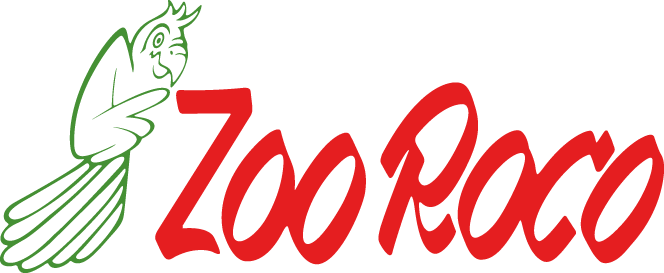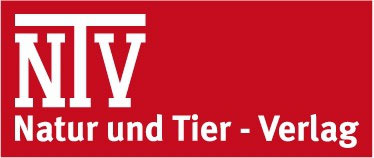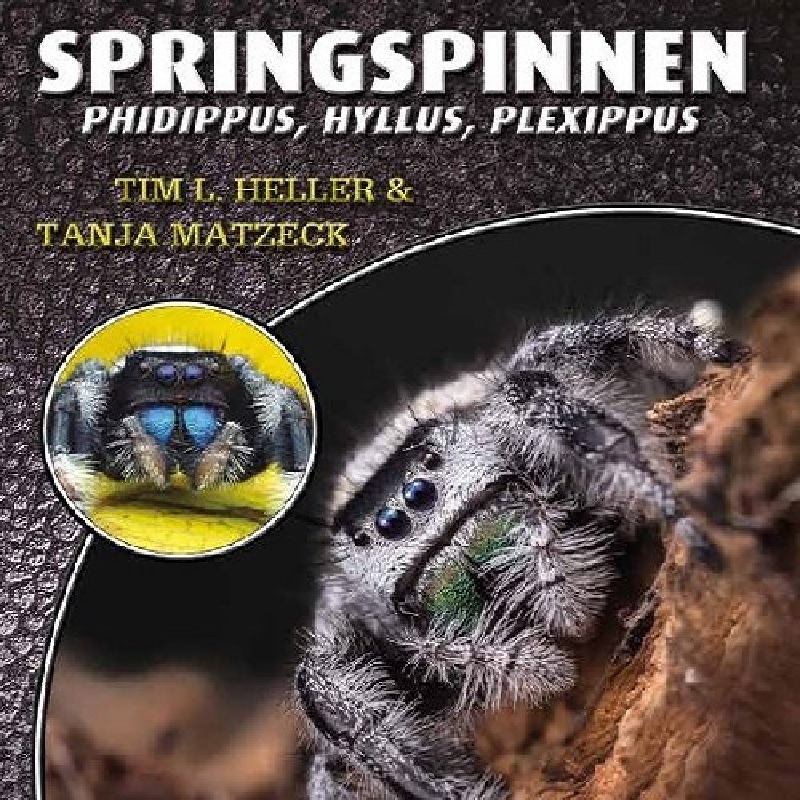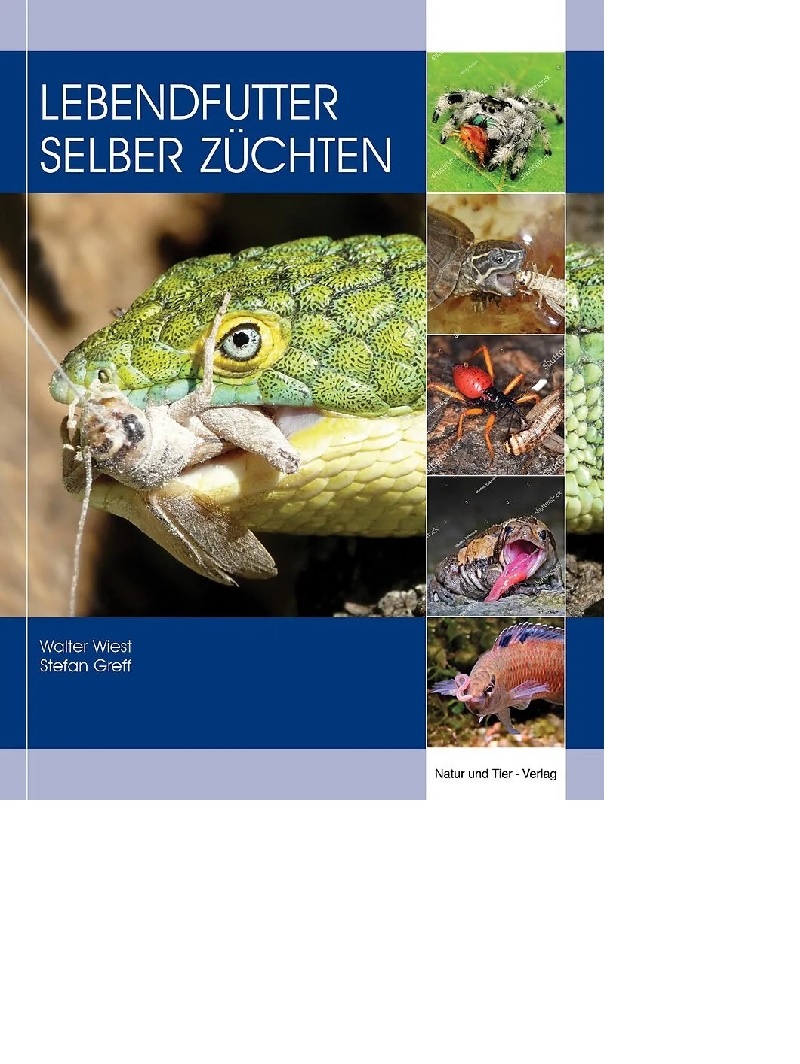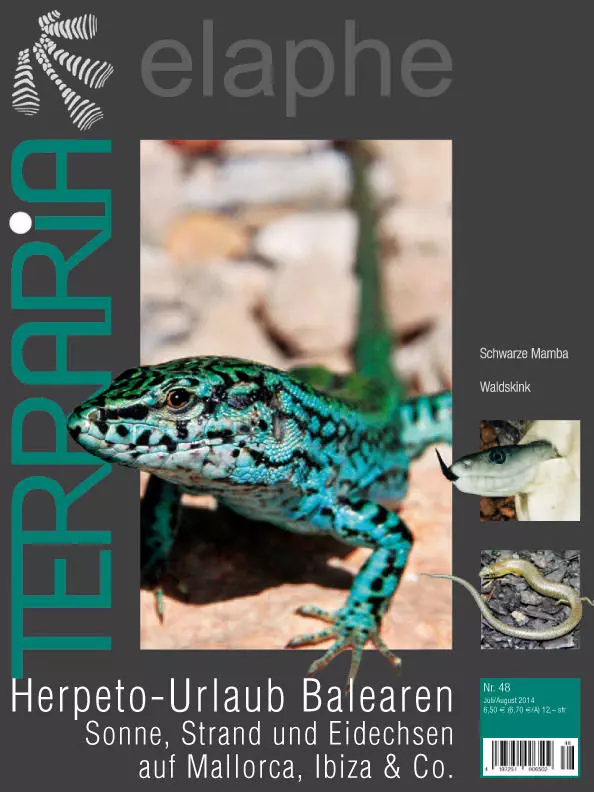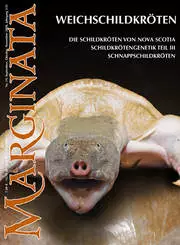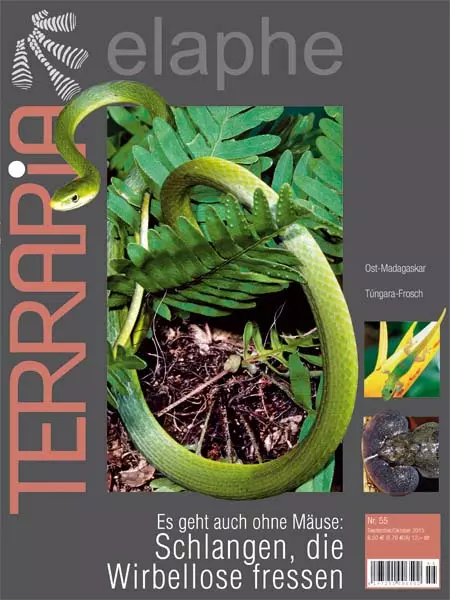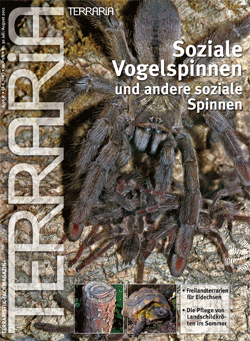

CHF 12.00
Stock: 5
Available, delivery time: 1-3 days

Terraria No. 30 - Social bird spiders and other social spiders
Die Pflege von Landschildkröten im Sommer
Inhalt:
Etliche Vertreter der Vogelspinnen lassen sich im Terrarium in Gruppen halten, beispielsweise Poecilotheria-Arten oder Holothele incei. Die Pflege einer solchen Spinnengemeinschaft zählt zum Faszinierendsten, was man in der Wirbellosenterraristik erleben kann. Boris F. STRIFFLER stellt nicht nur sämtliche Vogelspinnen vor, die für eine solche Haltung infrage kommen, sondern geht außerdem auch auf weitere soziale Spinnen ein – selbst auf solche, die direkt vor unserer Haustür leben!
Editorial
Kriton Kunz
Magazin
Gondwanaland – ein zukunftsweisendes Projekt im Zoo Leipzig. Teil 4: Die Eröffnung der Tropenerlebniswelt / Revision der Familie Cordylidae / Marktplatz / Rechtliches / Wie kommt das Gift in die Beute?
TERRAglobal
In der Bergwelt der Inka
Maik Dobiey
Titelthema
Soziale Vogelspinnen und andere soziale Spinnen
Boris F. Striffler
Soziale Spinnen – ein Widerspruch in sich?
Boris F. Striffler
Soziale Vogelspinnen? Beispiele aus Amerika
Boris F. Striffler, Frank Schneider und Ingo Wendt
Das Schildkrötenjahr. Freilandbiologie und Haltung europäischer Landschildkröten über den Jahreslauf Teil 3: Juli bis August – Sommerhitze
Michael Wirth
Die Gattung Nerodia. Wassernattern aus Nordamerika: Lebensweise sowie Haltung und Vermehrung im Terrarium Teil 1
Dieter Schmidt
Eidechsen im Freilandterrarium
Martin Dieckmann
Reise
Auf Amphibien- und Reptiliensuche in der Umgebung von Iquitos: Ranitomeya reticulata im Wald von Llanchama
Mario Kassat
Neue Arten
Ein psychedelischer Gecko
Axel Kwet
Neuer Pfeilgiftfrosch aus Brasilien
Axel Kwet
Abo & Service
Unter Forschern
Der Weg ist das Ziel – oder: Wie man sich eine Diplomarbeit selbst organisiert
Stephan Böhm
Blickfang
Terrarianernostalgie und tropischer Regenwald in Reutlingen – ein Besuch bei Florian Riedel
Michael Wirth
In Ihrer Nähe
Vorschau
Brutkasten
Schlimme Nächte: Guayaquil Teil 2: Wir Kleinlaut-Touristen
Heiko Werning
0 of 0 reviews
Login
Similar products
Customers also viewed
